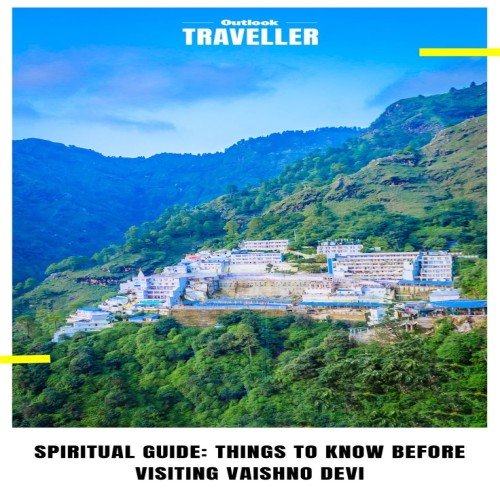
Discovering Patnitop: A Hidden Gem in Jammu and Kashmir
Posted at 13/Nov/24

Exploring Katra: The Gateway to Vaishno Devi
Posted at 13/Nov/24

Vaishno Devi Blog: A Spiritual Journey to the Divine Abode
Posted at 13/Nov/24

Discovering Hampi: A Journey Through the Ancient Ruins of Vijayanagara
Posted at 13/Nov/24
Written by Lalit Saini
Posted at 12/Nov/24

Begin your journey at the Swayambhunath Stupa, famously known as the Monkey Temple. This iconic stupa is one of the oldest and most sacred religious sites in Nepal, dating back over 2,500 years. Located on a hill, it offers a panoramic view of the Kathmandu Valley. The stupa is adorned with colorful prayer flags, and you’ll find devotees, monks, and of course, many playful monkeys.
As you walk around the stupa, take note of the eyes of Buddha painted on each side, representing wisdom and compassion. This is an ideal spot to reflect and take in the spiritual atmosphere.
Next, head to Kathmandu Durbar Square, the heart of ancient Kathmandu and a UNESCO World Heritage Site. The square is a complex of palaces, courtyards, and temples, including the Hanuman Dhoka Palace, which once served as the royal residence. Here, you can explore architectural marvels like Kumari Ghar (home of the Living Goddess), Taleju Temple, and Kasthamandap, from which Kathmandu gets its name.
Lunch: Enjoy traditional Nepali cuisine at Bhojan Griha, a beautiful heritage restaurant serving dal bhat (lentils and rice), momo (dumplings), and other local dishes in an old palace setting.
End your first day in Thamel, Kathmandu's bustling tourist district filled with shops, cafes, and vibrant nightlife. This area is great for souvenir shopping—think Tibetan singing bowls, pashmina shawls, and handcrafted jewelry. You’ll find a variety of restaurants, including OR2K for vegetarian Israeli and Mediterranean food, and Yin Yang for authentic Thai cuisine.
Wake up early and make your way to Pashupatinath Temple, one of the most important Hindu temples in the world, dedicated to Lord Shiva. Located on the banks of the Bagmati River, this UNESCO World Heritage Site is both sacred and solemn. You’ll see cremation rituals on the river ghats and colorful sadhus (holy men) with their painted faces and robes.
Afterward, visit the Boudhanath Stupa, another UNESCO site and one of the largest stupas in Asia. The stupa’s massive mandala makes it an essential pilgrimage site for Buddhists, and you’ll often see Tibetan monks and pilgrims performing a koras (circumambulations) around it. Surrounding the stupa are numerous monasteries, small shops, and cafes, creating a serene and culturally rich environment.
For lunch, try Himalayan Java near the stupa for a great cup of coffee and local bites, or visit Roadhouse Cafe for a mix of Western and Nepali cuisine with rooftop views of the stupa.
Experience the local side of Kathmandu by visiting Ason Bazaar, one of the city’s oldest markets. Here, you can wander through narrow alleyways and find vendors selling everything from spices and teas to brassware and dried herbs. This vibrant market captures the daily life of the locals and offers an authentic look at Nepali culture.
Take a short drive to Patan (also known as Lalitpur), a historic city known for its art, architecture, and ancient culture. Patan Durbar Square, another UNESCO World Heritage Site, is filled with intricately carved temples, including the Krishna Mandir and the Golden Temple (Hiranya Varna Mahavihar). The city’s traditional metalwork and woodcarving are especially remarkable, and there are several art galleries and workshops where you can learn more about these crafts.
After exploring Patan, head to Bhaktapur, a well-preserved medieval city known for its traditional Newari architecture and rich history. Bhaktapur Durbar Square is the focal point, with highlights like the Nyatapola Temple (Nepal's tallest pagoda), Vatsala Temple, and the intricately designed 55-Window Palace. Stroll through Bhaktapur’s narrow lanes, where you can find local artisans making pottery, woodwork, and Thangka paintings.
Lunch: Try local specialties like Juju Dhau (Bhaktapur’s famous sweet yogurt) and Newari dishes at a local restaurant in Bhaktapur.
The best time to visit Kathmandu is during autumn (September to November) and spring (March to May) when the weather is pleasant, the skies are clear, and festivals like Dashain and Holi are celebrated with great enthusiasm.
If your visit coincides with one of Kathmandu’s vibrant festivals, be sure to join in the celebrations:
Kathmandu is a city of contrasts, where ancient traditions meet modern energy, and spirituality blends seamlessly with daily life. From its sacred temples to its bustling markets, there’s a timeless quality to Kathmandu that makes it a city like no other. With its rich history, cultural depth, and gateway to the Himalayas, a trip to Kathmandu will surely be one of the most memorable experiences for any traveler.
Copyright © Disha Holidays 2024-2025 | All Right Reserved